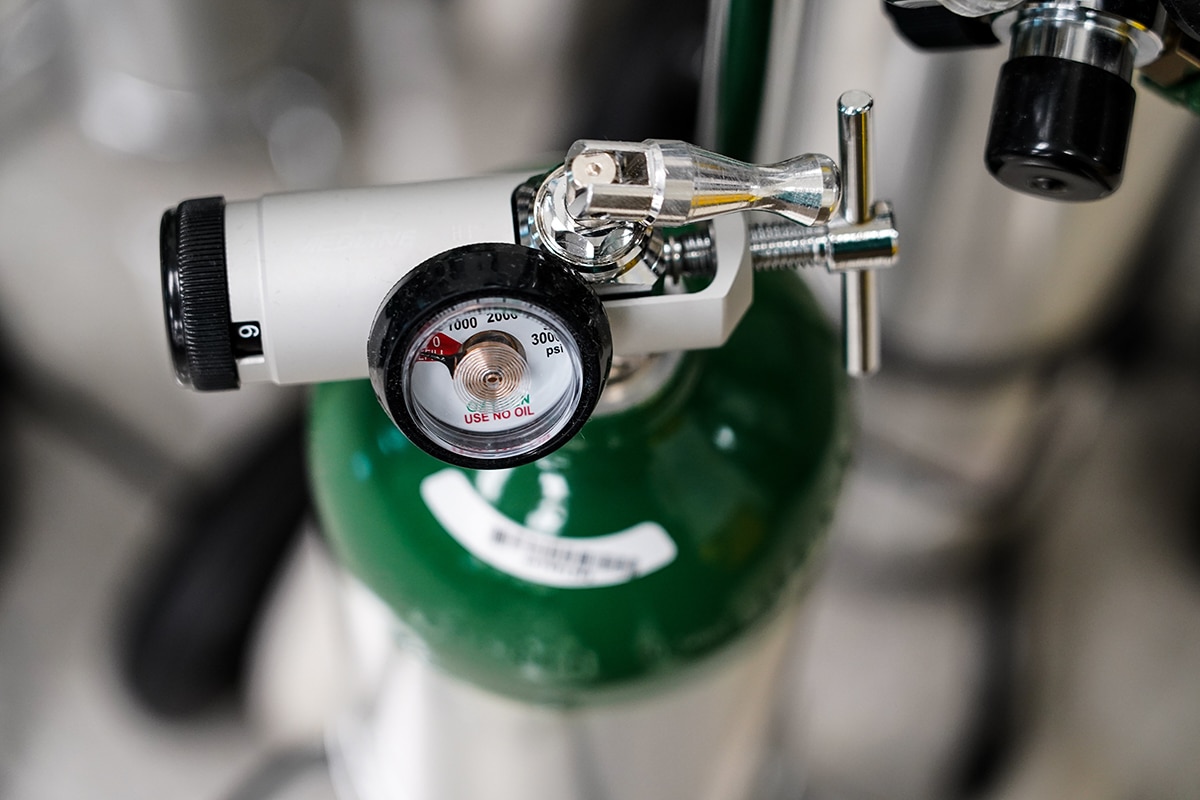In regions where medical oxygen is scarce, IoT-enabled devices can greatly improve patient outcomes. Medical oxygen is an essential medicine, instrumental to the survival of patients undergoing surgeries, trauma care, the treatment of respiratory diseases, cardiovascular diseases, and more. Through a system of real-time data collection and constant connectedness between workers and stakeholders, IoT technology can help healthcare facilities make the most of every medical oxygen canister in oxygen-scarce regions, maximizing the amount of patients able to receive life-saving treatment.
Oxygen Accessibility Saves Lives
Medical oxygen is necessary for the survival of patients undergoing a variety of medical treatments, especially for vulnerable populations like newborns, children, and pregnant women. It is estimated that stable access to medical oxygen can prevent as many as 122,000 deaths per year from childhood pneumonia.
In 2017, the World Health Organization (WHO) added oxygen to its Model List of Essential Medicines (EML), as well as its List of Essential Medicines for Children (EMLc), for the treatment of hypoxemia in an attempt to make the global distribution of medical oxygen more equitable. However, medical oxygen scarcity still remains a global issue, now exacerbated by the Covid-19 pandemic. The pandemic has greatly intensified the issue practically everywhere. Even in the US, where medical oxygen is abundant, health officials are concerned about a potential shortage brought on by Covid-19.
Medical Oxygen Scarcity is a Long-Term Problem
Oxygen scarcity has plagued regions around the world even before the Covid-19 pandemic. Especially prevalent in low and middle income countries, many regions lack the oxygen supply chains, the equipment, and the training necessary to optimize oxygen use. This is a particularly challenging problem in Sub-Saharan Africa– a 2010 study of Sub-Saharan health facilities revealed that only 44% had access to an oxygen source, only 34% had enough equipment to regular meet oxygen demand, and only 29% had regular access to at least one oxygen cylinder.
Moreover, medical oxygen delivery requires a steady source of power, which is not guaranteed in regions like Sub-Saharan Africa, where a 2013 study revealed only 528 of 4,000 health facilities across 11 Sub-Saharan countries had reliable electricity. Therefore, healthcare facilities must learn to maximize oxygen use within an unreliable infrastructure. Battery-powered cellular or Bluetooth Low Energy (BLE) beacons, third party strategic analysis, and real-time feedback can be a low-cost, long-term solution.
IoT Can Capture Real-Time Oxygen Data and Alert Employees
IoT platforms that integrate real-time beacon data and people-based feedback can help facilities manage their current stock of oxygen cylinders while also improving internal communication. There is also potential for IoT platforms to improve medical oxygen supply chain infrastructures to create more reliable, regular oxygen delivery plans.
Battery-powered cellular or BLE beacons can capture location and pressure data about the current stock of oxygen cylinders at healthcare facilities. Oxygen cylinders that are misplaced, near empty, or require other attention will trigger an alert sent to designated platform users. Using this system, healthcare workers will be able to locate each cylinder, and if oxygen is available, replace those that are near empty, enabling hospitals to optimize the oxygen it has readily available.
Integrating real-time beacon data with real-time human feedback from healthcare workers and their stakeholders, such as oxygen suppliers, has the potential to create seamless communication that facilitates the flow of critical information needed to improve hospital oxygen delivery operations. Ideally, healthcare facilities will be able to notify suppliers when oxygen is running low, creating more strategic, more reliable delivery systems.
Sub-Saharan Pilot Program
In a partnership with a primary healthcare focused non-profit organization, Thinaer evaluated whether implementation of IoT technology might combat medical oxygen shortages in healthcare facilities in under-resourced healthcare settings. Thinaer’s data collection strategy integrates real-time machine data from its beacons with real-time human feedback from healthcare workers, creating easy and constant communication between workers and other stakeholders.
The pilot, currently in its second of three months, is designed to offer a focused, small-scale version of what can be expected from Thinaer technology when implemented.
Want to learn more? Connect with us!
Feel free to get in touch with us to learn more about our 360° Digital Transformation solution.

